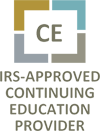Help Your Clients Maximize
Their Social Security Benefits
Earn Your RSSA Certificate
Become a Registered Social Security Analyst
Become an RSSA
Software & Training –
The 5-Course Program
Learn advanced strategies & rules, includes RSSA Roadmap software & training with case studies to provide value-add to your clients
Pass the Exam & Earn
Your RSSA Certificate
Register to take & pass the national RSSA Competency Final Exam to become a Registered Social Security Analyst
Membership Includes
Software & Client Support
Membership resources including access to RSSA Roadmap software, client marketing, continuing education courses & more
Free Online Workshop
How to Increase Medicare & Annuity Sales with Social Security
Learn how to help your clients and prospects optimize their Social Security benefits.
If you sell Medicare, life insurance, or annuities and are looking to boost your income, attend this webinar to learn more.
Reserve My Seat
A Professional Opportunity
The Market is Huge.
The Demand is Great.
There is a tremendous demand for professionals that understand Social Security. More than 70 million Baby Boomers will collect Social Security. They will need personalized answers. As a Registered Social Security Analyst, you can help clients potentially gain tens or hundreds of thousands of dollars in incremental Social Security income. Take advantage of this smart opportunity and get started with your training today.

Tax Professionals
Adding Social Security advisory services transforms a seasonal tax practice with a year round client opportunity. As a Registered Social Security Analyst, the final billable “product” you provide your client is a written custom analytical report.
Financial Advisors
Retiring seniors represent the wealthiest segment of the population. As a Registered Social Security Analyst, you'll differentiate yourself from other advisors. Provide the answers and strategies seniors need to maximize their retirement income.
Licensed Professionals
This program will provide you with everything you need to know about Social Security rules, strategies, and how to build your very own practice or launch a new career. You can help clients maximize their Social Security and lead richer lives.Earn Your RSSA Certificate &
Maximize Your Clients' Social Security
Your clients need Social Security answers.
Become their trusted Social Security advisor.
What You'll Get as an RSSA
Includes Everything You Need to Know about Social Security
Strategies to maximize Social Security benefits
RSSA Roadmap software to generate client reports
Practice tools and forms
Video case studies
Pass the RSSA Final Exam
Receive your RSSA Certificate
Social Security Advisory,
the Next New Trend for Financial Professionals
Differentiate your practice and attract new clients with Social Security knowledge.
Download White PaperThe RSSA Program
5 Self-Study Courses
Which Earn CPE Credits
The program includes everything you need to know to earn your RSSA credential and capitalize on this opportunity.
Social Security Essentials
Most retirees are confused and misinformed about the topic of Social Security, and many are seeking expert advice. As a professional providing clients with tax, financial, insurance and other retirement related services, you may be getting questions from your clients about their Social Security benefits.
Module I will provide you with detailed basic Social Security information that pertains to all retirees, including a history of the Social Security program, how funding works, how benefits are calculated, descriptions of benefits available for married, single, divorced, and widowed retirees, and critical information to consider when evaluating your client’s claiming decision.
Case examples will be used to illustrate the most common rules and strategies necessary to optimize Social Security benefits through the comparison of best and worst claiming decisions.
Licensed professionals who are confident in their understanding and knowledge about Social Security will quickly become the “go-to” resource, not only in their own organization, but community wide. Social Security expertise builds trust and adds value for existing clients and is a topic that easily attracts prospects.
RSSA has partnered with Devin Carroll to enhance the education offered to our members. Devin is an RSSA and financial planner who founded Social Security Intelligence to demystify the program for others so they can confidently choose the best strategies to maximize their benefits. When he's not creating content to help the masses better navigate the Social Security system, Devin provides financial and retirement planning at his firm, Carroll Advisory Group.
We have included specific deep dive videos by Devin on certain topics in the modules. We hope these add context and help simplify some of the more complex Social Security rules. Please watch the videos and be prepared for questions on the module exams that may pertain to the topics Devin presents.
If you have questions on the material, reach out to support@narssa.org.
Upon successful completion of this module, participants will be able to:
Choose the most commonly used terms and acronyms using the Social Security definitions learned in the course.
Identify the effect of life expectancy on lifetime Social Security income amounts and survivor benefits using a given couples' case example.
Recognize important Social Security program historical facts and changes to the program.
Recall the funding mechanisms of Social Security, including the maximum taxable earnings amounts.
Specify the steps used to calculate a retiree's PIA.
Calculate a client's PIA given their AIME.
Choose the Full Retirement Age (FRA) for a retiree given their birth year.
Select the correct amount of annual decrease or increase in Social Security benefits for retirees who claim prior to their FRA or after that date.
Identify the current year earnings test income limits and the amount of Social Security benefits to be withheld given a retiree's age and earnings
Recognize the rules and requirements for retirees to collect spousal and survivor benefits.
QAS Self-Study
Basic
None
None
Specialized Knowledge
Social Security Advanced Topics
The Social Security income claiming decision is often more complex for retirees who have special situations such as pensions from non-covered employment. We also cover two other important parts of Social Security, disability, including disabled adult children, and Medicare.
Every year, more retirees see their Social Security benefits subject to federal income tax, due to the taxation threshold limits that have not been adjusted for inflation since their initial inception in 1983 and 1994. This critical fact makes the timing of collecting benefits and withdrawal of funds from taxable retirement and other investment accounts an even more complicated decision for retirees.
Module II begins by covering the most common advanced topic, pensions. The two pension-related rules, the Windfall Elimination Provision (WEP) and the Government Pension Offset (GPO), will be discussed in detail.
Chapter 2 of this module focuses on the federal income taxation of Social Security benefits – the history of that taxation, the method of determining if and how much of a retiree’s Social Security income will be taxed, and case studies illustrating the need for education and retirement planning to include and manage this taxation.
Chapter 3 addresses Social Security disability, including the general rules, eligibility criteria, application and determination details, family disability benefits, and benefits for disabled children. Like Social Security retirement benefits, disability rules are highly personal for each case and to be eligible a worker must meet both work and medical requirements.
Chapter 4 includes an introduction to Medicare, the eligibility requirements, a description of benefits, Medigap (or supplemental insurance) overview, and the Medicare application process.
The topics covered in this module may not come up in every client case but are complex and it is important to provide accurate, in-depth advice when offering Social Security and retirement income planning services to a broad base of clients. Module II prepares you for these more complex topics.
If you have questions on the material, reach out to support@narssa.org.
Upon successful completion of this module, participants will be able to:
Determine the financial impact of the Windfall Elimination Provision on an individual’s retirement benefit given the case details.
Calculate the Government Pension Offset reduction on spousal and survivor benefits for specific case examples.
Recall the differences between covered and non-covered pensions.
Choose the correct definition of combined (provisional) income.
Recall the two different combined income thresholds for single and married taxpayers and the portion of their Social Security income than may be subject to taxation.
Select the two amounts of Social Security benefits subject to taxation and the years those laws were enacted.
Define the two eligibility requirements for Social Security disability insurance.
Name the five steps in the process used to determine a worker's eligibility to receive disability benefits.
State the four Medicare parts and the different types of care and services each part covers.
Choose the eligibility criteria for Medicare Part A.
Select the correct way that Medicare Part B premiums are calculated.
Recall the benefits provided by Medicare Part and Part D.
QAS Self-Study
Basic
None
Module I
Specialized Knowledge
Taxes
Comprehensive Retirement Planning
Planning to retire requires a major shift from years of working and accumulating wealth to suddenly relying on that nest egg and other sources of income for the retirement years. Recognizing the value of making a smart Social Security income election decision in the context of all other retirement finances is just the start of analyzing cash flow throughout retirement years.
Although this module specifically addresses tax and financial topics, all RSSAs who are helping individuals with their Social Security income planning should understand the breadth of topics included in comprehensive retirement planning.
As an RSSA, whether you are an insurance agent, a reverse mortgage specialist, a senior services advisor, tax expert, financial planner, or any other type of professional working with those planning for retirement, understanding and being able to refer your clients to professionals in other specialties will be greatly appreciated.
Chapter 1 of this module starts out with retirement planning 101, then continues with a discussion of the retirement planning team, retirement income streams, and how Social Security is the foundation of retirement plans. A discussion of many retirement topics is critical to understanding a retiree’s complete retirement financial picture.
Clients should also be encouraged to evaluate their tax liability, medical and insurance needs, legal documents, and legacy planning prior to reaching retirement age.
Chapter 2 addresses the taxation of retirement income and the importance of Social Security income taxation management in the context of overall retirement planning. The management of Social Security taxation and the sequence of withdrawal from specific retirement accounts can help retirees increase the longevity of their portfolios and raise their standard of living in retirement.
Chapter 3 will provide case studies that illustrate the tax implications from making the interrelated decisions of maximizing or optimizing Social Security income and the sequence of withdrawals from retirement accounts and other funds. Social Security maximization may not be the best strategy when accounting for taxation and the types of retirement funds providing income. Initial software results are often just the starting point for discussions with clients about income gaps, referrals to other professionals, legacy planning, and more.
Chapter 4 concludes with a discussion about the future of Social Security. Misinformation about the program’s history of changes, current funding sources, projected solvency, and solutions available to keep the program fully funded are common. Being educated on this topic and sharing your knowledge with others is vital.
If you have questions on the material, reach out to support@narssa.org.
Upon successful completion of this module, participants will be able to:
Choose the common retirement planning terms and acronyms used in the course.
Select the reason(s) why Social Security income planning is the "foundation" of a retirement financial plan.
Differentiate between the funds in a retirement planning "stool" versus a retirement planning "pyramid".
Recognize how consideration and inclusion of Social Security taxation and income planning in a comprehensive retirement plan can increase the longevity of portfolios.
Determine features to consider when choosing a software to help with Social Security claiming decisions.
Recognize the difference between optimization and maximization of Social Security benefits.
Identify client information needed to evaluate Social Security and retirement financial information to optimize net after-tax income for retirees.
Recall how the timing of claiming Social Security benefits and the sequence of retirement account and other asset withdrawals can impact retirement finances.
Determine for given retirement planning case studies, the impact that claiming Social Security at certain ages can have on total taxable income and taxation of benefits.
Choose the reason(s) that the Social Security program is in danger of not being able to fund 100% of benefits in the 2030’s.
Recognize possible future adjustments to the Social Security program that will help the trust fund to remain solvent.
QAS Self-Study
Basic
None
Module I-II
Specialized Knowledge
Taxes
Working with Clients
Working with clients to analyze their optimal Social Security claiming decisions can be approached in a very systematic way. The process itself is straight-forward, following a detailed set of steps and requiring specific software inputs.
The value you provide is the detailed knowledge of Social Security rules and claiming nuances to know the correct questions to ask your clients and guide them in their decision. Making sure that a client’s personal past, current, and future circumstances are considered will guarantee that you are working towards their optimal claiming decision.
Whether you will be offering this service as a stand-alone analysis and report or including it in the larger retirement financial planning service you offer clients, the desired result is the same: helping them to make an optimal claiming decision to guarantee they receive all they are entitled to.
Chapter One covers the Social Security income planning environment, what the current and future market is for this service, and how any upcoming proposed changes to the Social Security program will impact the need. Opportunities for building and incorporating Social Security services into an existing business are discussed.
Chapter Two is an introduction to working with clients including assessing their needs and gathering the critical information needed for the Social Security analysis. The Social Security claiming decision can lead to an examination of other retirement finances, providing an analyst with further opportunities to work with clients on their retirement financial plans and grow their business. Chapter Two concludes with a discussion about presenting and explaining the analysis and report to clients.
Chapter Three describes and specifically addresses the unique opportunity to help self-employed business owner clients who are nearing retirement. Sections include explanations of the major business structures, self-employment taxes, earnings and deductions, and how net earnings are determined and reported.
Chapter Four introduces a unique service opportunity, the Self-Employed Retirement and Tax Analysis, SETARA. This analysis is Social Security based and provides comparisons of alternative projected client incomes and the resulting effect on their lifetime benefits and amount of self-employed tax contributions. A detailed client case is presented to show potential savings and resulting additional income.
If you have questions on the material, reach out to support@narssa.org.
Upon successful completion of this module, participants will be able to:
Identify factors contributing to the need for Social Security income planning advice.
Choose the best source of information and assistance with individual Social Security claiming decisions.
Select the impacts on the need for expert Social Security advice that result from changes to the Social Security program.
Specify the information needed to analyze a client’s most optimal Social Security claiming age.
Recall the information provided to clients with a Social Security income planning analysis.
Recognize the opportunities available to practice and highlight Social Security expertise and skills when working with pre-retirees to analyze their optimal claiming age(s).
Identify the main types of business structures and specifics that differentiate them from each other.
Choose the components and amounts for self-employment tax.
Recognize the details about determining and reporting net self-employment income.
Specify the purpose of a Self-Employed Tax and Retirement Analysis (SETARA).
Select the main reason a SETARA requires the advice of a tax professional.
Calculate for a specific client SETARA, what the net increase will be between a lower lifetime amount of Social Security and the savings gained by lower self-employment taxes during remaining years of earnings.
QAS Self-Study
Basic
None
Module I-III
Communications & Marketing
Specialized Knowledge
Social Security Software Case Studies
In addition to providing education and CE credits on the topic of Social Security, the NARSSA program is designed to train you to use state-of-the-art Social Security software to analyze client cases. Should you become a Registered Social Security Analyst, RSSA, you may wish to use your expertise on the topic to offer Social Security income planning services to workers approaching retirement.
In this final module, you will learn to use the cloud-based analytical software program, RSSA Roadmap. The link to access Roadmap is located on the right side of the blue banner across the top of your Member Center. The Chapter One case guides you step-by-step through the process of entering client data, running a case, and analyzing the results. You will apply the knowledge you learned in the first four modules to analyze real-world Social Security client cases using this software. The Module V training is only an introduction to the capabilities of this software. To become proficient, you will need to continue to do real case analyses.
RSSA Roadmap gives you the ability to examine three optional claiming age strategies with each report. You can also easily go back into the software and choose any other claiming age strategies that you would like to provide for your clients, or that they request.
As you know, for each person, each month and year start date for collecting Social Security results in a different benefit amount. There are, therefore, thousands of possible collection strategies to examine. It is only due to this type of software that we can provide our clients with precise, numerical options to help them make the decision of when it is best for them to claim their benefits.
This software program will enable you to help your clients collect tens of thousands of dollars more over their lifetime by making the right filing choices. You will be able to easily enter your clients' data, including uploading their Social Security earnings history provided by the client and taken directly from the Social Security Administration website.
The software program generates customized word document reports that you can personalize in the Settings tab with your business contact information. The RSSA Roadmap Report includes your client information inputs, PIA calculations, claiming options with filing sequences, color-coded lifetime, annual and monthly benefit charts and tables for each family member, and detailed notes with explanations. Side-by-side report comparisons between the different Social Security claiming ages options provide you with the ability to clearly show clients the income they will receive by using each option.
Although the software strives to provide the maximum lifetime income for each client case, it is often not financially feasible for retirees to follow that particular claiming strategy. Many workers claim earlier than the maximum claiming ages and strategy recommendations due to financial need or other specific goals in retirement. You provide value to your clients by explaining the results and reviewing the precise numerical comparisons between alternative claiming ages and strategies so that they may make the most optimal claiming decision for their situation.
You will be introduced to each of the six clients with their specific case explanations, the client information forms they have filled out, and their past earnings records. Follow the instructions in the case explanation document to analyze each client’s claiming options using the software.
The Chapter 1 case goes through a fairly typical case with a married couple, Rose and Jack Dawson, who have some future earnings expected before retiring. This case is an introduction to the software, the inputs and outputs are explained in great detail.
Your client in Chapter 2 is a single man, Steve Rogers. He was never married and has no children. He is 60 and plans to work through the end of 2030. He’d like to learn how his benefits will look at various filing ages so he can plan ahead for the next several years.
In Chapter 3 you will meet a widowed woman, Rosa Molina. She is interested in learning when she can file for survivor benefits and how they may impact her own retirement benefits.
Chapter 4 presents the case of a divorced woman, Christina Yang. She was married for over 20 years and has been divorced now for 18 years. She turned 61 last year and is interested in knowing her filing options. She is surprised to learn that she may also be eligible to collect an ex-spousal benefit.
Chapter 5 introduces the couple Will and Liz Turner. Will is receiving a non-covered pension in addition to the Social Security benefits he will collect. This case highlights the changes to Will’s Social Security benefit due to the Windfall Elimination Provision (WEP).
The example in Chapter 6 illustrates the case of a married couple, Vivian and Ed Lewis, who have a disabled adult child, Henry. Determining the best Social Security claiming dates and strategies for couples involves analyzing thousands of possible claiming ages. In this case, it is even more complex since their son is also eligible for benefits when they start collecting their retirement benefits.
For each of the six Social Security case examples, you will produce one or more reports that you will download, name, and save to your computer. Many of the chapter review and Module V exam questions will be based on the results in these reports. You will need all six case reports to answer the Module V exam questions.
If you become confused or feel you do not understand any particulars about the cases, please reach out to us at support@narssa.org.
Upon successful completion of this module, participants will be able to:
Differentiate the specific amounts of retirement, spousal, child and survivor benefits that are included in the net annual benefits for family software cases.
Recognize why maximized lifetime filing dates/ages may not be the same as maximized monthly and annual filing dates/ages for a specific client software case.
Identify the maximized lifetime benefit filing dates for specific client software cases.
Determine the difference in lifetime benefit amounts between the maximized and other optional filing ages for a married couple Social Security software case.
Select the difference in maximized lifetime benefits for a couple case compared to the option of them both filing at FRA.
Choose from the PIA calculation table what the correct indexed earnings are for specific clients’ past years’ earnings.
Recognize the increase in PIA for a client based on their future projected earnings.
Select the reason(s) a divorced individual is eligible to collect ex-spousal and survivor benefits.
























